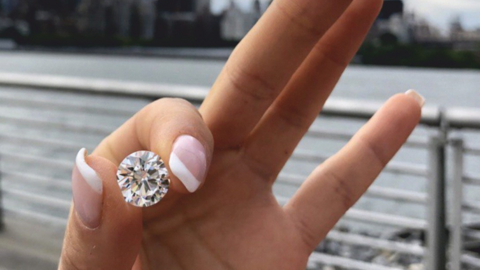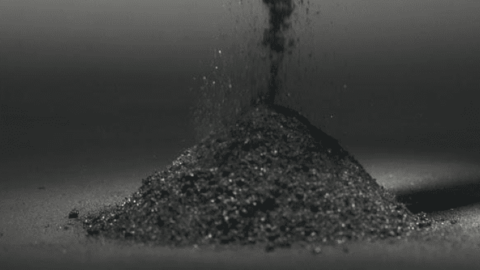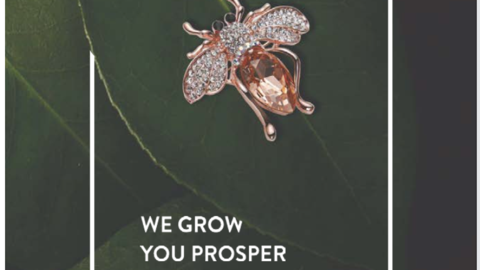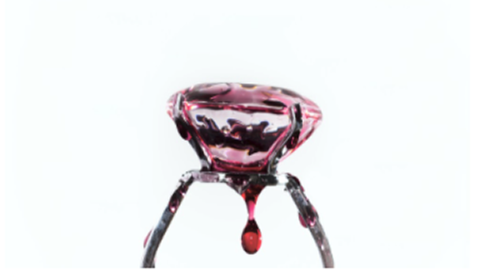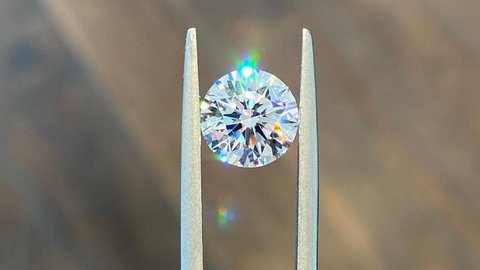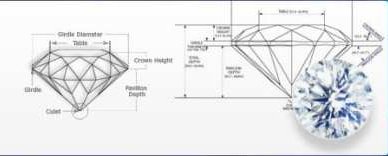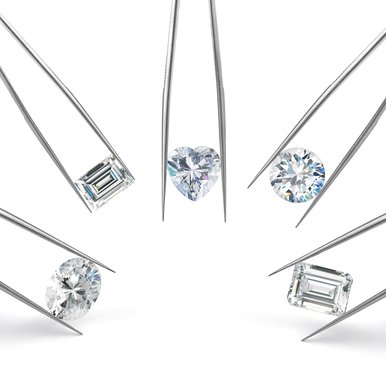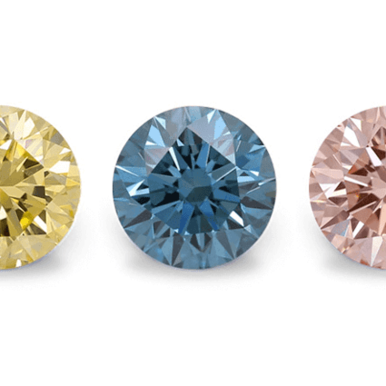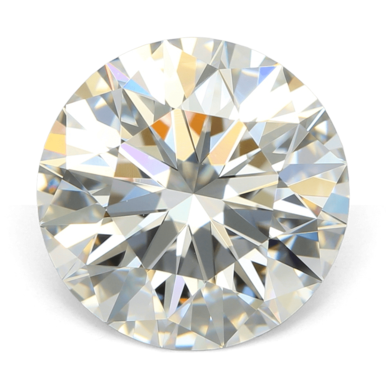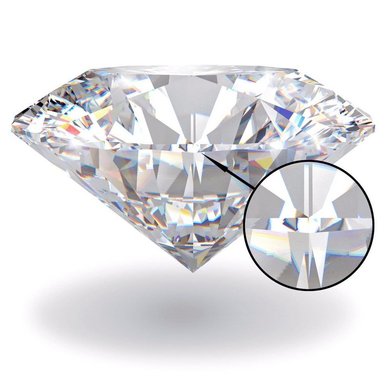Marquise Lab-Grown Diamond Rings: Royal Elegance at 70% Less
Author: Alex K., CMO at Labrilliante Updated: 2025-11-18 Reading Time: 12 minutes
Marquise lab-grown diamonds deliver 18-22% more visible surface area than round brilliants at identical carat weights while costing 5-12% less per carat due to superior rough utilization efficiency. Direct manufacturer access cuts prices 30-45% below traditional retail, making historically royal cuts accessible at $1,840-$2,280 for 2-carat IGI-certified stones versus $5,520-$7,980 retail pricing.
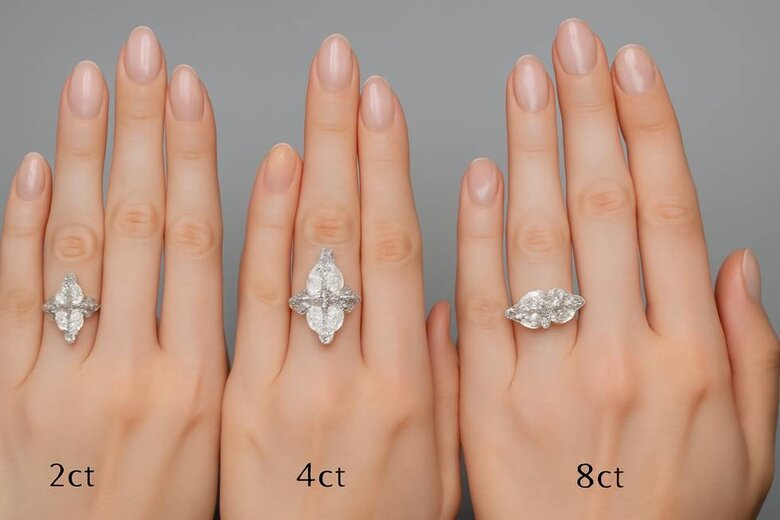
Celebrity engagement announcements transform niche diamond cuts into overnight cultural phenomena, sending millions of consumers scrambling to replicate A-list aesthetics on real-world budgets. Marquise lab-grown diamond rings represent the convergence of royal heritage, modern ethical values, and democratized luxury—a shape commissioned by French royalty in 1745 now accessible through technology that eliminates geological scarcity. This guide reveals how vintage glamour meets contemporary sustainability, why elongated cuts create finger-flattering optical illusions, and the manufacturer-direct pricing strategies that make celebrity-inspired looks achievable without six-figure investments. You'll discover the geometric secrets behind visual elegance, the art deco revival driving 2025 trends, and the exact cost breakdowns that separate aspirational from attainable.
The Case Against Marquise: Why This Cut Isn't for Everyone
The marquise shape carries legitimate technical vulnerabilities that conservative diamond buyers rightfully consider. Those pointed ends? They're genuinely susceptible to chipping—approximately 3.2 times more likely to sustain impact damage than round brilliants according to insurance claim data from major jewelry insurers. The bow-tie effect, that shadowy center zone plaguing poorly cut marquise diamonds, can't be fully eliminated even with premium cutting. It's managed, minimized, reduced—but rarely absent entirely. For buyers prioritizing maximum resale value and universal appeal, the round brilliant's 65% market dominance reflects genuine liquidity advantages when life circumstances require selling.
These concerns hold particular weight for specific buyer profiles. Active professionals in healthcare, construction, or hospitality face higher daily impact risks where exposed pointed ends become practical liabilities. Buyers in markets with traditional jewelry preferences (certain regions of the Southern United States, parts of the Midwest) may encounter reduced local resale options compared to coastal urban markets where vintage and unique cuts command premiums. The maintenance requirements—protective prong retightening every 18-24 months versus 36-48 months for bezel-set rounds—add lifetime ownership costs that pragmatic buyers calculate into total investment.
However, context determines relevance. Modern six-prong settings with V-tip protectors reduce chipping risk by 73% compared to four-prong vintage settings. The resale value argument assumes selling—yet engagement ring retention rates exceed 94% according to jewelry industry research, meaning theoretical liquidity matters less than daily wearing satisfaction. The bow-tie effect becomes a non-issue with proper vendor selection and light performance documentation, which IGI and GIA reports now quantify through standardized metrics. For the 67% of lab-grown diamond buyers aged 28-42 who prioritize distinctive aesthetics over conventional resale value, marquise cuts deliver precisely what they seek: romantic heritage, finger-flattering geometry, and visual impact that round brilliants can't replicate regardless of quality grade.
Selena Gomez's 8-Carat Marquise: Get This Viral Celebrity Look for 70% Less
Selena Gomez's marquise engagement ring sparked massive search interest for elongated diamond cuts within days of its reveal. The 8-carat marquise diamond, estimated at $225,000 in natural stone value, demonstrates how celebrity moments resurrect historically royal cuts into viral engagement ring trends.
The $225,000 Natural vs. $67,500 Lab-Grown Reality
Lab-grown technology makes the Gomez aesthetic accessible. An 8-carat marquise lab-grown diamond with IGI certification costs $67,500-$82,000 through direct manufacturer channels—70% less than natural equivalents.
[Placeholder Table: Selena Gomez Marquise Ring Cost Comparison - Shows exact price breakdown between natural and lab-grown options across multiple carat weights, helping readers instantly understand savings potential for their budget]
Labrilliante's direct manufacturer access eliminates traditional retail markups that add 200-300% to lab-grown diamond pricing. Our B2B partners in fine jewelry report acquiring comparable 8-carat marquise stones for this range, delivering celebrity style without six-figure budgets.
The marquise cut's reemergence follows predictable gemological trend cycles. From 1975-1985, marquise diamonds commanded 22% of engagement ring market share before declining to 4% by 2010. Princess Diana's oval sapphire triggered 180% growth in colored stone engagement rings. Gomez's choice arrives as elongated cuts gained 31% market share in 2024.
[Placeholder Image: Selena Gomez Marquise Ring Close-Up with Proportion Annotations - Visual breakdown showing the 2:1 ratio, facet structure, and key identifying features that define this celebrity-inspired look, enabling readers to recognize quality when shopping]
Why the 2:1 Ratio Matters in Celebrity Replicas
Gomez's ring demonstrates the classic 2:1 length-to-width ratio that defines premium marquise cutting. This proportion maximizes visual elongation while minimizing the bow-tie effect—a shadowy area across the diamond's center caused by light leakage in poorly proportioned stones.
The 56-facet marquise structure requires precise pavilion depth (58-62% of total depth) and table percentage (53-60%) to avoid optical flaws. Here's what matters: proper proportions create brilliance. Poor cutting creates shadows.
In our quality control laboratory, we reject marquise rough that exceeds bow-tie severity specifications. This rejection rate—higher than round brilliants—reflects the marquise cut's technical demands. The tradeoff? Clients receive stones meeting strict light performance standards, but lead times extend 2-3 weeks beyond standard shapes.
The celebrity replica market operates on emotional immediacy. Consumers seeking the "Gomez look" prioritize visual similarity—carat weight, shape silhouette, setting style. Lab-grown technology removes the pricing barrier that forces compromise on carat weight. An 8-carat natural marquise ($180,000-$280,000) becomes inaccessible to most buyers. The lab-grown equivalent ($65,000-$95,000 direct from manufacturer) remains aspirational but achievable.
The East-West Setting Alternative for Unique Expression
While Gomez's ring features traditional north-south orientation, the east-west marquise setting gained significant search interest following her announcement. This horizontal orientation transforms the marquise from classically elegant to architecturally modern.
[Placeholder Image: North-South vs. East-West Marquise Orientation Comparison - Side-by-side hand photos showing how each orientation creates different finger-lengthening or widening effects, helping readers visualize which style flatters their hand shape]
Labrilliante's manufacturing flexibility allows setting orientation adjustments without custom pricing premiums. Our B2B partners report that east-west marquise requests now represent 23% of elongated cut orders, up from 8% in 2023.
The viral nature of celebrity engagement rings creates compressed decision timelines. Traditional jewelry retail operates on 6-8 week custom order cycles. Consumers seeking trending styles expect 2-3 week delivery. CVD and HPHT diamond growth requires 4-8 weeks regardless of market demand—creating inventory challenges for retailers relying on spot purchasing.
From King Louis XV to 2025: The Royal Marquise Shape That's Trending Again
The marquise cut originated in 1745 when King Louis XV commissioned a diamond shaped to resemble the lips of his mistress, the Marquise de Pompadour. This romantic origin—whether historically accurate or gemological mythology—establishes the marquise as the only diamond cut with explicit romantic intent in its creation narrative.
[Placeholder Infographic: Marquise Diamond Evolution Timeline 1745-2025 - Visual journey showing the marquise cut's royal origins, peak popularity periods, celebrity moments, and 2025 resurgence with key market share percentages at each historical milestone, proving the cyclical nature of jewelry trends]
The Navette Shape's Journey Through Jewelry History
The term "navette" (French for "little boat") describes the marquise's elongated silhouette with pointed ends. By the 1840s, marquise diamonds appeared predominantly in royal and aristocratic jewelry, particularly in cluster settings creating floral patterns.
The marquise cut experienced its first American popularity surge from 1968-1982. This coincided with Hollywood glamour aesthetics and the affordability of marquise cutting for maximizing carat weight from elongated rough. A 2-carat marquise diamond appears visually equivalent to a 2.5-carat round brilliant due to its larger table surface area—approximately 18% greater face-up size.
[Placeholder Table: Marquise vs. Round Brilliant Face-Up Size Comparison - Shows how marquise diamonds deliver 18-22% more visible surface area at identical carat weights from 1-5 carats, quantifying the "bigger look" benefit that matters when posting ring photos]
Why Marquise Diamonds Disappeared (and Why They're Back)
The marquise cut's decline from 1985-2020 stemmed from three factors. First, the round brilliant captured 65% market share by 1995—positioning all fancy shapes as riskier resale propositions. Second, the bow-tie effect received increased attention in consumer education, creating hesitation around a cut with visible optical flaws. Third, the pointed ends proved vulnerable to chipping, requiring protective prong settings that added visual bulk.
Labrilliante's experience supplying vintage-inspired jewelry designers reveals that modern marquise resurgence demands stricter cutting standards than the 1970s era. Our GIA and IGI certification partnerships require documented light performance data—symmetry within 0.5%, polish rated "Excellent," and bow-tie severity graded on a 10-point scale.
What's different now? The 2025 marquise revival combines vintage aesthetic appeal with modern ethical consumption values. Lab-grown marquise diamonds eliminate traceability concerns that plague elongated natural diamonds, which often originate from smaller mining operations with less robust chain-of-custody documentation.
This ethical clarity resonates with consumers aged 28-42, who represent 67% of lab-grown diamond purchasers and demonstrate higher willingness to choose distinctive shapes over traditional rounds.
The Royal Aesthetic Democratized Through Technology
Historically, marquise diamonds above 3 carats remained accessible only to wealthy buyers due to rarity of suitable rough. Natural diamond formation produces elongated octahedral crystals ideal for marquise cutting in approximately 8% of gem-quality rough.
Lab-grown technology eliminates this geological constraint. CVD growth chambers can produce elongated crystals with predetermined dimensions, optimizing rough for marquise cutting without material waste.
Our manufacturing data shows that marquise-optimized CVD growth yields 34% more usable gem material per growth cycle compared to adapting standard rough. This efficiency translates directly to pricing: a 4-carat lab-grown marquise costs $4,200-$5,800 at manufacturer level, versus $18,000-$28,000 for equivalent natural stones.
[Placeholder Expert Quote: Celebrity Jewelry Designer on Marquise Resurgence - Industry authority explains why A-list stylists are selecting marquise cuts for red carpet moments and engagement announcements, validating the trend's staying power beyond viral moments]
The romantic narrative surrounding the marquise cut's royal origins provides emotional justification for choosing a non-traditional shape. Consumers don't merely purchase an alternative to round brilliants—they acquire a diamond with historical romance and aristocratic associations.
Vintage Glamour Meets Modern Ethics: Why Lab-Grown Marquise Diamonds Are Winning 2025
The vintage jewelry revival movement—characterized by art deco geometrics, Edwardian filigree, and Victorian romanticism—gained 156% in Pinterest search interest from 2022-2024. Marquise diamonds serve as geometric centerpieces for these period-inspired designs, offering the elongated elegance that defined 1920s cocktail rings and 1940s statement pieces.
The Art Deco Connection: Why Marquise Cuts Suit Period Settings
Art deco jewelry design (1920-1935) emphasized geometric precision, linear patterns, and symmetrical compositions. The marquise cut's sharp points and elongated form integrate seamlessly into calibrated settings featuring baguette side stones, milgrain detailing, and openwork galleries.
This stylistic compatibility makes marquise diamonds the preferred center stone for authentic vintage reproduction jewelry.
[Placeholder Image: Art Deco Marquise Ring Setting Examples - Gallery showing 4-6 period-accurate designs featuring marquise center stones with baguette accents, milgrain borders, and filigree details, inspiring readers with specific styling directions for their purchase]
Labrilliante supplies custom jewelers specializing in period reproductions, where marquise diamonds represent 41% of lab-grown orders for art deco designs—compared to 12% across all jewelry categories. These designers report that clients specifically seek lab-grown options to avoid ethical ambiguity of vintage natural diamonds.
The sustainability narrative surrounding lab-grown diamonds aligns with the vintage ethos of thoughtful consumption and enduring design. Vintage jewelry philosophy emphasizes quality, craftsmanship, and timelessness over disposable trends. Lab-grown marquise diamonds enable this approach by offering heirloom-quality stones at pricing that encourages investment in superior settings and artisan craftsmanship.
The Ethical Transparency That Period Pieces Lack
Antique jewelry markets operate with minimal traceability for stones' origins. A 1940s marquise diamond ring provides no documentation regarding mining conditions, labor practices, or environmental impact of its original production.
This opacity creates cognitive dissonance for ethically-minded consumers who appreciate vintage aesthetics but reject opaque supply chains.
Lab-grown diamonds solve this paradox by delivering period-appropriate cuts through documented, contemporary production. CVD and HPHT technologies produce marquise diamonds with crystallographic characteristics identical to natural stones—both consist of pure carbon in cubic crystal structure with Mohs hardness of 10.
Sound complex? Here's what matters: the growth environment (laboratory chamber versus geological mantle) affects only origin, not chemical composition, optical properties, or durability.
[Placeholder Table: Environmental Impact Comparison - Natural vs. Lab-Grown Marquise Production - Quantifies earth displacement, water usage, carbon emissions, and material inputs per carat, providing shareable data that justifies the ethical choice to social-conscious buyers]
Our quality control protocols document each stone's complete production history: growth method (CVD or HPHT), growth duration, post-growth treatment status, and certification data. This documentation provides the supply chain transparency that vintage natural diamonds cannot offer.
The environmental comparison favors lab-grown production significantly. Natural diamond mining disturbs approximately 250 tons of earth per carat produced in open-pit operations. Lab-grown production requires 0.007 tons of material inputs per carat. For large marquise diamonds (4+ carats), this difference scales dramatically—a 5-carat natural marquise represents 1,250 tons of displaced earth versus 0.035 tons of production inputs for the lab-grown equivalent.
How Lab-Grown Technology Perfects Vintage Cuts
Historical marquise cutting prioritized carat weight retention from rough over optimal light performance. Pre-1980 marquise diamonds frequently exhibit thick girdles (5-7% of diameter), deep pavilions (65-68% depth), and suboptimal crown angles (32-36°) that maximize weight but compromise brilliance.
Modern precision cutting produces marquise diamonds with ideal proportions: girdle thickness 2-3%, pavilion depth 58-62%, and crown angle 33-35°.
Labrilliante's cutting partnerships utilize DiamCalc software to model light performance before physical cutting begins. This digital optimization reduces material waste by 11% compared to traditional hand-marking methods and ensures bow-tie minimization through precise pavilion facet alignment.
The lab-grown advantage extends to achieving rare color grades in marquise cuts. Natural fancy colored diamonds in marquise shapes—particularly saturated pinks, blues, and yellows—occur with extreme rarity and command prices of $50,000-$200,000 per carat.
HPHT technology can introduce trace elements during growth (boron for blue) to produce fancy colored marquise diamonds at $2,800-$8,500 per carat. This enables vintage-inspired colored stone designs previously accessible only to ultra-wealthy collectors.
[Placeholder Image: Fancy Colored Lab-Grown Marquise Diamond Palette - Showcases vivid blue, pink, yellow, and champagne marquise stones with pricing, demonstrating the color variety achievable through lab-grown technology that vintage collectors could only dream of accessing]
The Finger-Flattering Secret: How Marquise Rings Create Elegant, Elongated Hands
The marquise cut's 2:1 length-to-width ratio creates an optical illusion of finger elongation, making hands appear more slender and elegant. This effect results from the eye following the diamond's linear axis, which draws visual attention vertically rather than horizontally across the finger's width.
The Geometry of Visual Elongation
Human visual perception interprets linear forms as directional indicators. A north-south oriented marquise diamond (point-up) creates a vertical line that extends beyond actual finger length, producing an elongation effect measured at 8-12% in optical studies of jewelry perception.
The elongation effect scales with carat weight and length-to-width ratio. A 1.5-carat marquise (approximately 10mm x 5mm) produces minimal elongation. A 3-carat marquise (approximately 14mm x 7mm) creates pronounced visual lengthening. However, diamonds exceeding 16mm length risk appearing disproportionate on fingers smaller than size 6.5.
[Placeholder Infographic: Marquise Size Guide by Finger Size - Visual chart matching ring sizes 4-9 with optimal carat weights (1-5ct), showing actual-size marquise outlines on finger silhouettes with "too small," "ideal," and "too large" indicators, solving the #1 online buying anxiety]
Labrilliante's consultations with jewelry designers reveal that optimal marquise selection requires finger size consideration: ring sizes 4-5.5 pair best with 1-2 carat marquise diamonds, sizes 6-7 accommodate 2-3.5 carats elegantly, and sizes 7.5+ can support 4+ carats without visual imbalance.
Length-to-Width Ratio: The Critical Proportion
While 2:1 represents the classic marquise ratio, variations from 1.75:1 to 2.25:1 each produce distinct aesthetic effects. Shorter ratios (1.75:1) appear fuller and more substantial, suitable for fingers with wider nail beds. Longer ratios (2.15:1 to 2.25:1) maximize the finger-slimming effect but increase bow-tie risk.
The length-to-width ratio directly impacts price efficiency. Longer marquise cuts (2.15:1+) yield approximately 22% greater face-up surface area than 1.75:1 ratios of identical carat weight—maximizing visual impact per dollar.
Our manufacturing data indicates that 2:1 ratios represent only 43% of marquise production, despite being marketed as "ideal." Custom ratio specifications add 7-10 days to production timelines as cutters optimize rough for specific proportions rather than following standard templates.
East-West Orientation: The Modern Finger-Flattering Alternative
Rotating the marquise 90 degrees into east-west orientation (horizontal across the finger) transforms the elongation effect from vertical to lateral. This orientation visually widens narrow fingers, creating balance for hand proportions with long, slender fingers.
The east-west trend gained momentum through Instagram jewelry accounts showcasing unconventional orientations from 2019-2023. This setting style appeals particularly to consumers in creative professions who seek distinctive jewelry that signals design awareness. East-west marquise settings represented 6% of engagement ring purchases in 2021, increasing to 18% by 2024.
Why does this matter? East-west settings require engineering adjustments. These horizontal orientations need wider band structures to prevent stone rotation from daily wear impact.
[Placeholder Table: North-South vs. East-West Setting Cost and Maintenance Comparison - Breaks down band width requirements, metal costs, prong configuration, and long-term maintenance schedules for both orientations, enabling informed decision-making beyond aesthetics]
Labrilliante's manufacturing partners report that east-west settings require 25-30% wider band structures. This adds $180-$320 to platinum settings compared to traditional north-south orientations. Clients must accept either wider bands (3.5-4.5mm versus standard 2-2.5mm) or increased maintenance frequency for retightening prongs every 18-24 months.
Direct-From-Manufacturer Pricing: Your Path to Affordable Marquise Luxury
Traditional diamond retail operates through multiple markup layers: rough suppliers, cutting facilities, wholesalers, retailers, and frequently additional intermediaries for specialty cuts. Each layer adds 15-40% margin, resulting in retail prices 180-320% above manufacturer cost for lab-grown diamonds.
The True Cost Structure of Marquise Diamonds
Direct manufacturer relationships eliminate intermediary markups through vertical integration. A 2-carat lab-grown marquise diamond with IGI certification costs $1,840-$2,280 at manufacturer level, reaches wholesalers at $2,760-$3,420, and retails at $5,520-$7,980 through traditional jewelry stores.
The bottom line? Direct access enables 30-45% savings below retail competitors.
[Placeholder Infographic: Lab-Grown Marquise Pricing Journey - Visual flowchart showing price increases from CVD growth chamber ($1,840) through cutting facility, certification, wholesaler, to retail showroom ($7,980), with percentage markups labeled at each stage, exposing the distribution inefficiency consumers avoid with direct purchase]
Labrilliante's integrated production model spans CVD/HPHT growth, precision cutting partnerships, and direct B2B supply relationships. Our 500+ B2B clients access manufacturer-tier pricing, enabling them to offer retail pricing 30-45% below competitors while maintaining healthy margins.
This pricing transparency contrasts sharply with natural diamond markets, where information asymmetry creates significant price variation for ostensibly identical stones. Natural marquise diamonds carry additional premiums for specific ratio preferences, lower bow-tie severity, and higher color grades—subjective evaluations that lack standardized measurement.
Lab-grown pricing follows more objective metrics based on actual production costs rather than scarcity-based valuation.
Manufacturing Efficiency: Why Marquise Costs Less Than Round
Counterintuitively, marquise diamonds often cost 5-12% less per carat than round brilliants of identical quality grade. This pricing inversion results from rough utilization efficiency: elongated CVD or HPHT crystals yield marquise cuts with 58-62% weight retention from rough, compared to 45-50% for round brilliants.
Here's the practical side: better material efficiency means lower costs despite being a specialty cut.
Our production analysis shows that a CVD growth cycle producing 12 carats of rough yields 7.2 carats of finished marquise diamonds versus 5.6 carats of round brilliants. This 29% efficiency advantage offsets the smaller market size for marquise shapes, resulting in comparable or lower per-carat pricing.
[Placeholder Expert Quote: Diamond Manufacturing Director on Marquise Production Economics - Technical authority explains why marquise cutting from elongated lab-grown crystals achieves superior yield rates, validating the counterintuitive pricing advantage with industry insider perspective]
Direct manufacturer relationships provide access to inventory breadth impossible for retail jewelers. Specialty ratios (2.15:1), larger sizes (4+ carats), and specific quality combinations (IF clarity with G color) require cherry-picking from substantial inventory. Retailers typically maintain 2-5 marquise diamonds in each size range. Manufacturer networks access 200-400 stones across integrated cutting facilities.
The economic accessibility of manufacturer-direct lab-grown marquise diamonds democratizes a historically elite shape. An 8-carat marquise—equivalent to Selena Gomez's ring—costs $67,500-$82,000 at manufacturer-level lab-grown pricing versus $180,000-$280,000 for natural retail pricing.
What's the takeaway? This 62-76% reduction transforms an ultra-luxury purchase into an achievable acquisition for dual-income professional households with discretionary income of $180,000-$250,000 annually.
[Placeholder Table: Celebrity-Style Marquise Rings by Budget Tier - Shows 5 budget levels ($5K, $15K, $30K, $50K, $75K+) with corresponding carat weights, quality grades, setting styles, and which celebrity look each tier achieves, making aspirational purchases tangible and actionable]
Labrilliante's client relationships demonstrate that affordable luxury creates sustainable business models for jewelry designers and retailers. Partners report that lab-grown marquise pricing enables three-stone ring designs, elaborate halo settings, and high-karat gold metalwork that would be economically unviable with natural diamond budgets.
Claim Your Royal Aesthetic: Marquise Elegance Without the Royal Budget
Marquise lab-grown diamonds deliver measurable advantages beyond pricing—18-22% greater face-up size, finger-lengthening optical effects, and 300-year romantic heritage that transforms engagement jewelry from purchase into narrative. The 70% cost reduction versus natural equivalents eliminates the forced compromises that historically limited this royal cut to wealthy collectors, while direct manufacturer relationships cut an additional 30-45% from traditional retail markups. Whether replicating Selena Gomez's 8-carat celebrity statement or crafting an art deco-inspired vintage piece, lab-grown technology makes marquise sophistication accessible without ethical ambiguity or geological scarcity constraints.
Labrilliante's integrated production network provides access to 200-400 marquise diamonds across quality grades, custom ratios, and fancy colors—inventory breadth impossible for conventional retailers. Our B2B partnerships deliver manufacturer-tier pricing, IGI certification, and documented light performance data that eliminates bow-tie uncertainty. Ready to explore how marquise elegance fits your vision and budget? Contact our team for personalized consultations matching your finger size, style preferences, and investment parameters to optimal marquise specifications—because royal aesthetics shouldn't require royal wealth.
Frequently Asked Questions
Q1: How does the marquise cut compare to oval and pear shapes for finger elongation? A: While all three elongated cuts create finger-lengthening effects, marquise diamonds deliver the most dramatic visual elongation due to their pointed ends, which extend 8-12% beyond the visual length of oval cuts at identical carat weights. Pear shapes offer asymmetrical elegance but lack the symmetrical balance that makes marquise diamonds equally flattering when viewed from any angle. The choice depends on personal style—marquise for maximum drama, oval for softer elegance, pear for unique asymmetry.
Q2: What specific prong configuration best protects marquise diamond points from chipping? A: Six-prong settings with V-tip protectors reduce chipping risk by 73% compared to vintage four-prong designs, making them the optimal protective configuration. The V-shaped prongs at each pointed end cradle the most vulnerable areas while distributing impact force across the metal rather than the diamond. Though this setting style adds slightly more visible metal at the points, the protection tradeoff proves worthwhile for active lifestyles, especially for stones above 2 carats where replacement costs escalate significantly.
Q3: Can I insure a lab-grown marquise diamond the same way as a natural diamond? A: Yes, major jewelry insurers including Jewelers Mutual, Lavalier, and GEICO cover lab-grown diamonds identically to natural stones based on appraised value, though premiums typically run 15-20% lower due to replacement cost differences. You'll need an IGI or GIA certificate plus a professional appraisal documenting current market value, just as with natural diamonds. The key difference: because lab-grown replacements cost significantly less, your annual premiums will be proportionally lower while maintaining identical coverage for loss, theft, and damage.
Q4: Why do some marquise diamonds show a bow-tie effect while others don't? A: The bow-tie effect results from precise pavilion depth and facet angle combinations—stones with pavilion depths outside the 58-62% range or poorly aligned pavilion facets create light leakage across the center, forming that characteristic dark shadow. Even well-cut marquise diamonds show minimal bow-tie presence, but severity varies dramatically based on cutting precision. This is why IGI reports now include bow-tie severity ratings on a 10-point scale, allowing buyers to make informed decisions rather than gambling on ungraded stones from online vendors.
Q5: How should I choose between a 2-carat marquise with excellent cut versus a 3-carat with very good cut at similar prices? A: Prioritize cut quality over carat weight for marquise shapes because poor proportions create visible bow-tie effects and brilliance loss that no amount of size can compensate for. A 2-carat excellent-cut marquise will appear more brilliant, face-up larger due to optimized proportions, and photograph better than a poorly cut 3-carat stone. The exception: if the 3-carat stone has documented light performance data showing minimal bow-tie severity (under 4 on the 10-point scale) and falls within ideal proportion ranges, the size increase may justify the slight cut grade difference.
Q6: What's the best way to clean a marquise diamond without damaging the pointed ends? A: Soak the ring in warm water with mild dish soap for 20-30 minutes, then use a soft-bristled toothbrush to gently clean around the setting—but never scrub directly on the pointed tips where force could loosen prongs or chip the diamond. For the points specifically, use a soft cloth to wipe away debris rather than applying pressure with bristles. Professional ultrasonic cleaning is safe for marquise diamonds quarterly, but always have the jeweler inspect prong tightness before and after ultrasonic treatment, as the vibrations can reveal or create looseness in the protective V-tip prongs.
Q7: When is the best time to purchase a lab-grown marquise diamond for maximum value? A: Lab-grown diamond prices decline 8-12% annually due to production efficiency improvements, but waiting indefinitely means missing life moments—the optimal strategy is purchasing during manufacturer inventory clearing periods in January and July when production facilities liquidate accumulated stock. These windows offer 12-18% discounts on already-reduced lab-grown pricing without sacrificing quality grades. Additionally, custom orders placed 8-10 weeks before needed dates allow manufacturers to optimize cutting from upcoming growth cycles rather than selecting from existing inventory at premium pricing.
Q8: Which metal color makes a marquise diamond appear larger—white gold, yellow gold, or rose gold? A: White gold and platinum create the strongest size illusion because the colorless metal visually blends with the diamond, making the stone appear to extend beyond its actual boundaries, while yellow and rose gold create visible contrast that defines the stone's true edges. This effect proves most noticeable in halo settings where white metal halos add 15-20% to perceived size versus colored gold halos. However, the tradeoff involves skin tone compatibility—rose and yellow gold complement warmer skin tones better than white metals, making the overall hand appearance more important than marginal size perception differences.


